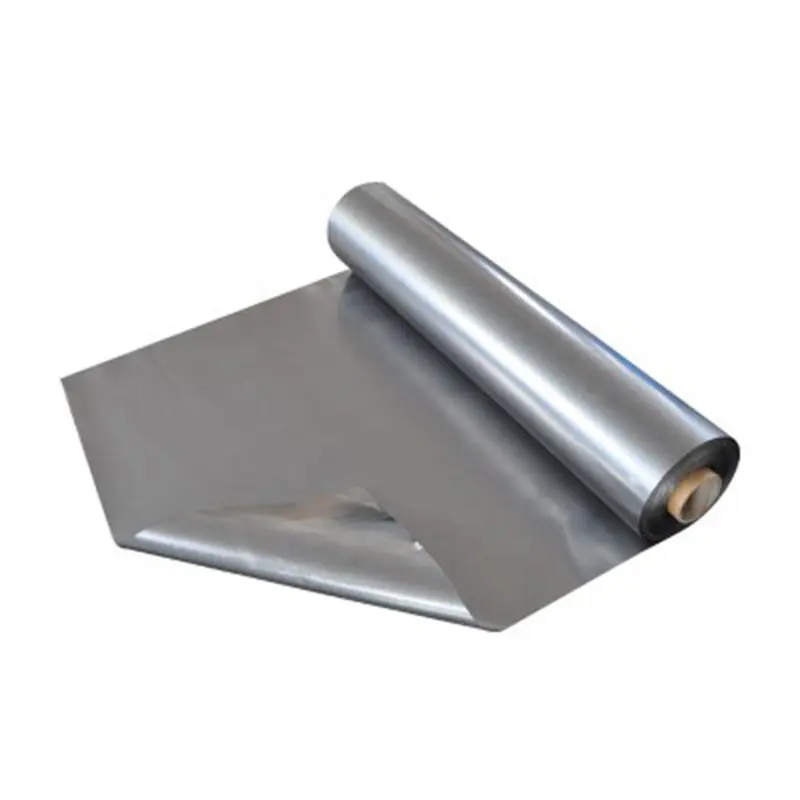In the world of high-performance technology, managing heat and ensuring reliable seals are critical challenges. From consumer electronics to aerospace engineering, the demand for materials that can withstand extreme temperatures and harsh environments is constantly growing. This is where the graphite sheet emerges as an indispensable solution. More than just a simple material, it’s a high-tech component that enables innovation by providing superior thermal management and sealing capabilities in some of the most demanding B2B applications.
What Makes Graphite Sheet a Superior Material?
A graphite sheet is a thin, flexible material made from exfoliated graphite. Its unique molecular structure gives it a set of properties that make it a standout choice over traditional materials like metals or polymers.
- Exceptional Thermal Conductivity: Graphite’s structure allows it to transfer heat away from critical components with remarkable efficiency, making it an ideal material for heat sinks and thermal spreaders in electronics.
- High Temperature Resistance: It can withstand extremely high temperatures, far beyond what most plastics or rubbers can tolerate. This makes it perfect for use in high-heat engines, furnaces, and industrial gaskets.
- Chemical and Corrosion Resistance: Graphite is highly inert, meaning it doesn’t react with most chemicals. This makes it an excellent choice for sealing applications in chemical processing plants where exposure to aggressive substances is a concern.
- Electrical Conductivity: As a form of carbon, graphite is a natural electrical conductor, a property that is essential for grounding or thermal interface applications where both heat and electricity need to be managed.
Key Applications Across High-Tech Industries
The unique properties of the graphite sheet have made it an essential component in a wide range of B2B applications.
- Electronics and Consumer Devices: Used as a heat spreader in smartphones, laptops, and other compact devices to dissipate heat and prevent overheating, ensuring optimal performance and longevity.
- Automotive and Aerospace: Serves as a high-temperature gasket for engine parts, exhaust systems, and fuel cells. Its light weight and thermal properties are critical for both performance and fuel efficiency.
- Industrial Sealing and Gaskets: Employed in pumps, valves, and pipelines to create reliable, leak-proof seals in environments with high temperatures, high pressures, and corrosive media.
- LED Lighting: Acts as a thermal management solution in high-power LED lights, helping to dissipate heat and extend the lifespan of the LED components.
Choosing the Right Graphite Sheet for Your Application
Selecting the right graphite sheet is a crucial decision that can impact your product’s performance, safety, and reliability. It’s not a one-size-fits-all solution, and different applications require specific material grades.
- Thermal Conductivity: High-power electronics need a sheet with a higher thermal conductivity rating to efficiently move heat away from components.
- Purity and Density: For critical applications like fuel cells, a high-purity graphite sheet is required to prevent contamination. Density affects the sheet’s strength and thermal properties.
- Thickness and Flexibility: Thin sheets are perfect for space-constrained electronics, while thicker sheets are better for robust sealing and gasketing applications.
- Surface Treatment: Some graphite sheets are treated with a polymer or metal layer to enhance their strength, sealability, or other properties for specific uses.
In conclusion, the graphite sheet is a cornerstone material for modern engineering. By offering a unique combination of thermal, electrical, and chemical properties, it solves some of the most complex challenges in today’s high-tech world. Investing in the right type of graphite sheet is a strategic decision that guarantees superior performance, extended product life, and enhanced safety for your B2B applications.
FAQ: Graphite Sheet for B2B
Q1: How does the thermal conductivity of a graphite sheet compare to copper? A: High-quality graphite sheet can have a thermal conductivity that is superior to that of copper, especially for heat spreading applications. Its lightweight nature is also a significant advantage over heavier metal heat sinks.
Q2: Is a graphite sheet suitable for electrical insulation? A: No. Graphite is a natural electrical conductor. If your application requires both thermal management and electrical insulation, you would need to use a graphite sheet that has been specially treated or laminated with an insulating layer.
Q3: What is the typical operating temperature range for a graphite sheet? A: In a non-oxidizing atmosphere (like in a vacuum or inert gas), a graphite sheet can operate at temperatures as high as 3000∘C. In an oxidizing atmosphere (air), its operational temperature is significantly lower, typically up to 450∘C to 550∘C, depending on the grade and purity.
Post time: Aug-21-2025
